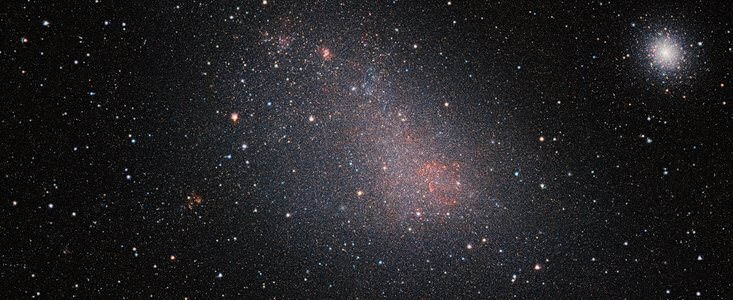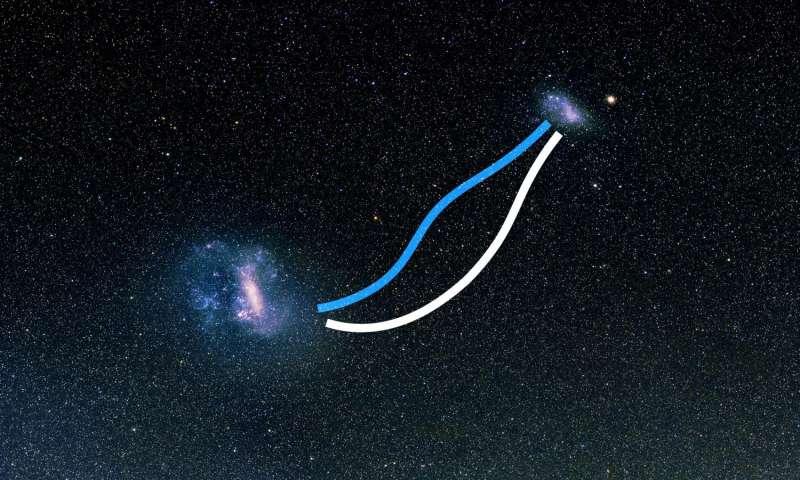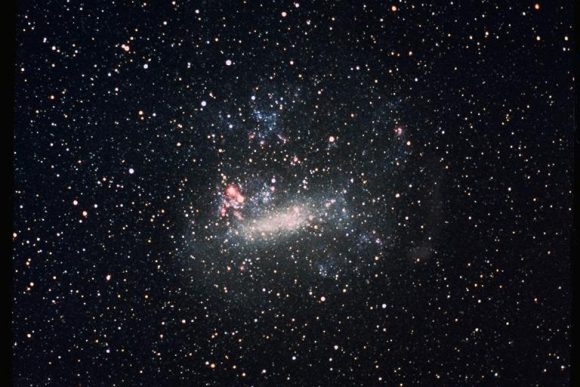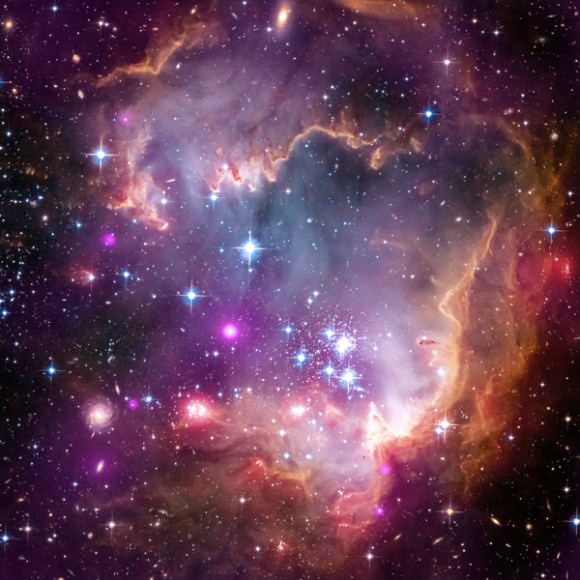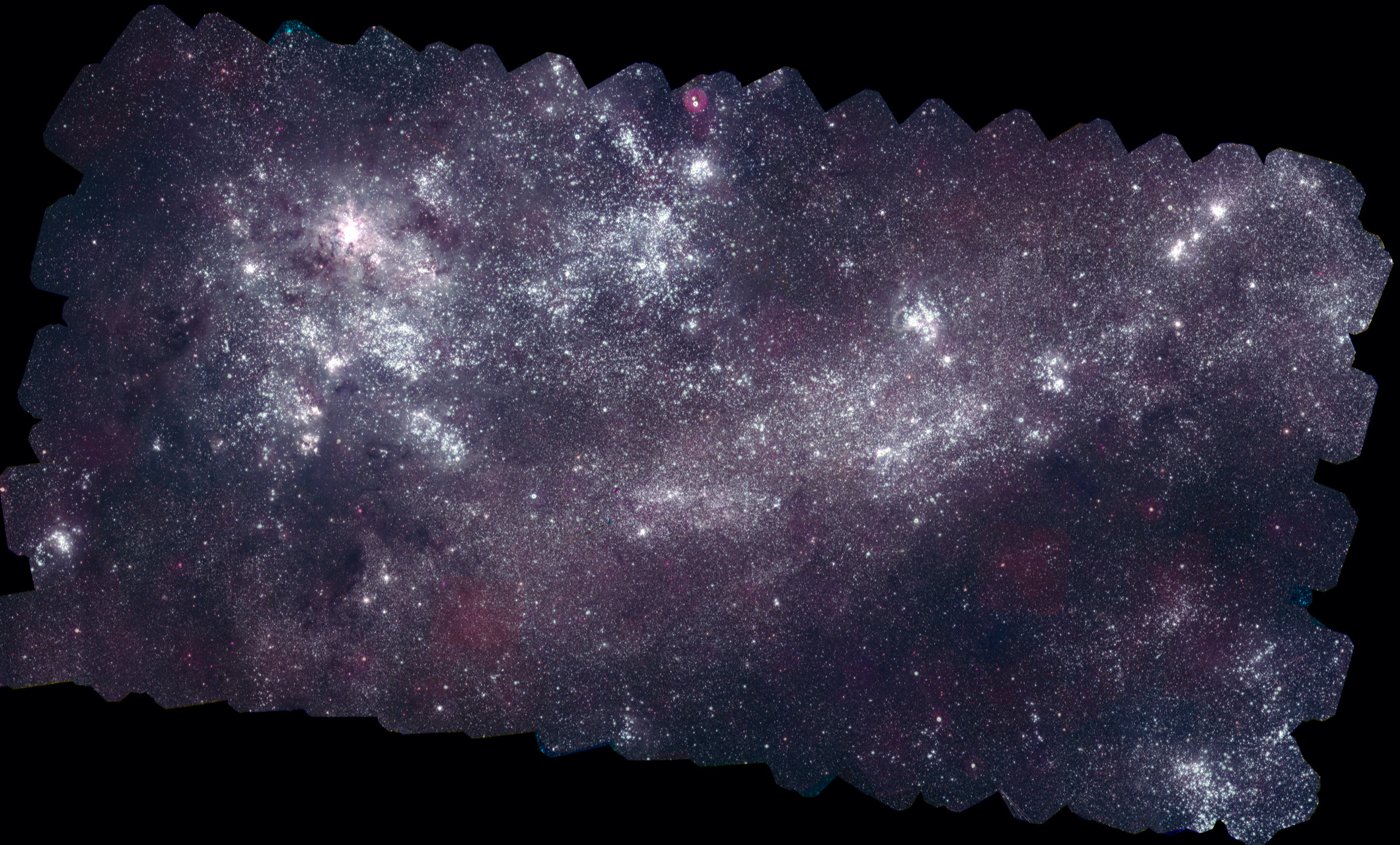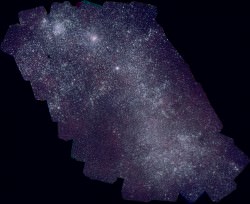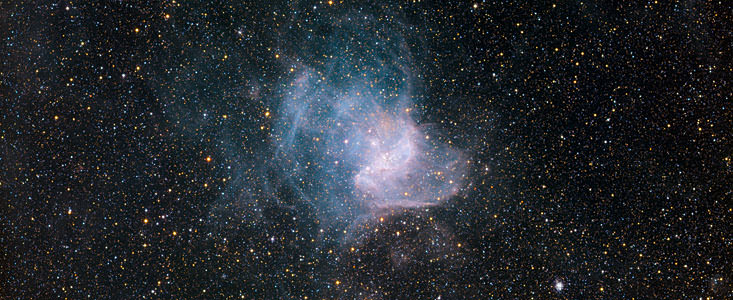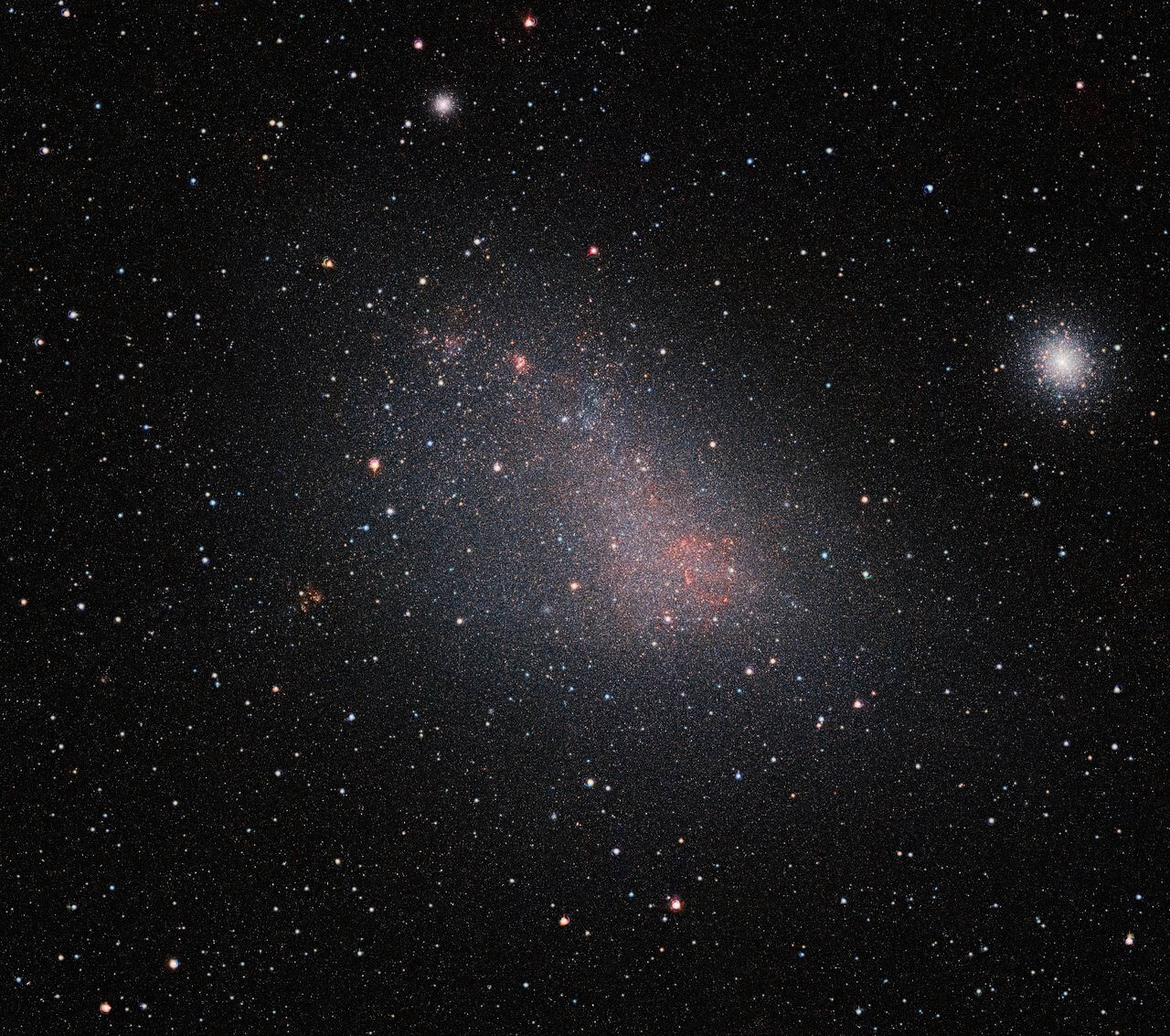
The Small Magellanic Cloud (SMC) is one of the Milky Way’s nearest companions (along with the Large Magellanic Cloud.) It’s visible with the naked eye in the southern hemisphere. A new image from the European Southern Observatory’s (ESO) Visible and Infrared Survey Telescope for Astronomy (VISTA) has peered through the clouds that obscure it and given us our biggest image ever of the dwarf galaxy.
The SMC contains several hundred million stars, is about 7,000 light years in diameter, and is about 200,000 light years away. It’s one of the most distant objects that we can see with the naked eye, and can only be seen from the southern hemisphere (and the lowest latitudes of the northern hemisphere.)
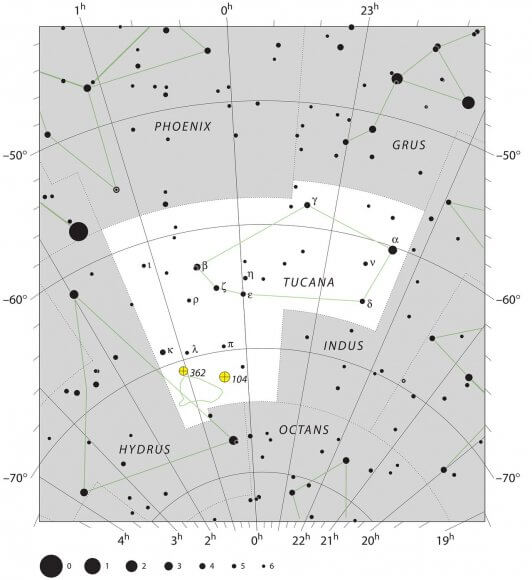
The SMC is a great target for studying how stars form because it’s so close to Earth, relatively speaking. But the problem is, its detail is obscured by clouds of interstellar gas and dust. So an optical survey of the Cloud is difficult.
But the ESO’s VISTA instrument is ideal for the task. VISTA is a near-infrared telescope, and infrared light is not blocked by the dust. VISTA was built at the ESO’s Paranal Observatory, in the Atacama Desert in Chile where it enjoys fantastic observing conditions. VISTA was designed to perform several surveys, including the Vista Magellanic Survey.
Explore the Zoomable image of the Small Magellanic Cloud. (You won’t be disappointed.)
The VISTA Magellanic Survey is focused on 3 main objectives:
- The study of stellar populations in the Magellanic Clouds
- The history of star formation in the Magellanic Clouds
- The three-dimensional structure of the Magellanic Clouds
An international team led by Stefano Rubele of the University of Padova has studied this image, and their work has produced some surprising results. VISTA has shown us that most of the stars in this image are much younger than stars in other neighbouring galaxies. It’s also shown us that the SMC’s morphology is that of a warped disc. These are only early results, and there’s much more work to be done analyzing the VISTA image.
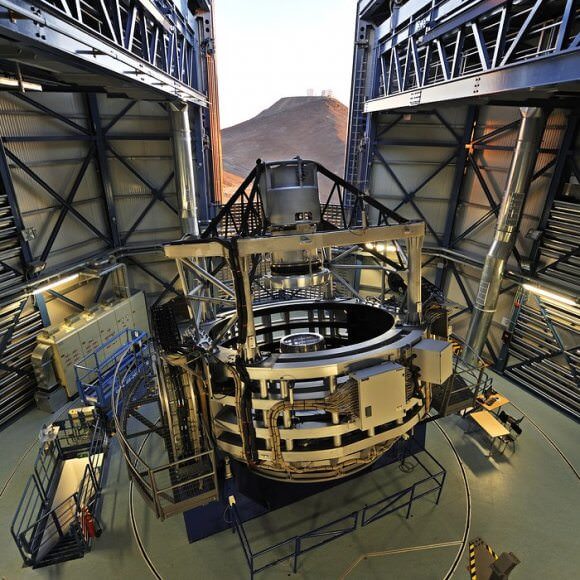
The team presented their research in a paper titled “The VMC survey – XIV. First results on the look-back time star formation rate tomography of the Small Magellanic Cloud“, published in the journal Monthly Notices of the Royal Astronomical Society.
As the authors say in their paper, the SMC is a great target for study because of its “rich population of star clusters, associations, stellar pulsators, primary distance indicators, and stars in shortlived evolutionary stages.” In a way, we’re fortunate to have the SMC so close. But studying the SMC was difficult, until the VISTA came online with its infrared capabilities.
VISTA saw first light on December 11th, 2009. It’s time is devoted to systematic surveys of the sky. In its first five years, it has undertaken large surveys of the entire southern sky, and also studied small patches of the sky to discern extremely faint objects. The leading image in this article is from the Vista Magellanic Survey, a survey covering 184 square degrees of the sky, taking in both the Small Magellanic Cloud and the Large Magellanic Cloud, and their environment.
Source: VISTA Peeks Through the Small Magellanic Cloud’s Dusty Veil

